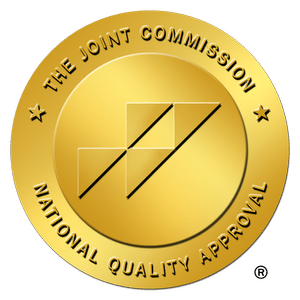Introduction to a Complex Topic
Bipolar disorder, a condition that historically has been misunderstood and stigmatized, is more than just a fleeting change in mood or a simple life challenge.
It is a complex mental health condition that requires a nuanced understanding and a compassionate approach.
In this article, I explore the intricacies of bipolar disorder, aiming to shed light on its many facets and foster a deeper understanding of its impact on individuals and their loved ones.
At its core, bipolar disorder is characterized by significant mood swings, including emotional highs (mania or hypomania) and lows (depression).
These aren’t the typical mood swings that everyone experiences; they are more intense, sometimes debilitating, and can significantly impact a person’s daily life.

Understanding bipolar disorder is crucial, not only for those who live with it but also for their friends, family, and society at large.
It is a spectrum disorder, meaning its symptoms can vary greatly in severity and form, making each person’s experience with it unique.
The term ‘bipolar spectrum’ encompasses a range of conditions.
From Bipolar I and II, which many are familiar with, to Cyclothymic Disorder and other specified and unspecified bipolar and related disorders, the spectrum reflects the varied ways in which the condition can manifest.
Recognizing this spectrum is vital because it influences how we diagnose, treat, and support those affected.
It also challenges the one-size-fits-all view of mental health and highlights the need for personalized care and understanding.
In this article I want to help you navigate the various aspects of bipolar disorder. I provide a comprehensive overview of its symptoms, offer insight into the diagnostic process, and discuss the treatment options available.
This article is designed to be a resource for those who are trying to understand their own experiences, those who want to support someone living with bipolar disorder, or anyone who wishes to gain a deeper understanding of this complex condition.
Mental health is a deeply personal subject, and while it’s important to rely on scientific and medical facts, it’s equally important to approach it with sensitivity and understanding.
By the end of this article, I hope you will have gained a more nuanced understanding of bipolar disorder, feel empowered with knowledge, and be equipped with the tools and resources to navigate this challenging yet manageable condition.
Whether you are personally affected by bipolar disorder, know someone who is, or are simply interested in learning more, this article aims to be an enlightening, supportive, and informative guide.

Understanding Bipolar Disorder
Bipolar disorder is a mental health condition marked by extreme mood swings that include emotional highs (mania or hypomania) and lows (depression).
When you become depressed, you may feel sad or hopeless and lose interest or pleasure in most activities.
When your mood shifts in the other direction, you may feel euphoric and full of energy.
These mood swings can affect sleep, energy, activity, judgment, behavior, and the ability to think clearly.
Episodes of mood swings may occur rarely or multiple times a year. While most individuals will experience some emotional symptoms between episodes, some may not experience any.
Although bipolar disorder is a lifelong condition, you can manage your mood swings and other symptoms by following a treatment plan.
In most cases, bipolar disorder is treated with medications and psychological counseling (psychotherapy).
Historically, bipolar disorder was referred to as manic depression, a term coined by Emil Kraepelin in the late 19th century. This term accurately described the pendulum-like mood swings associated with the condition but did not capture the full spectrum of bipolar disorder.
Over time, our understanding of this illness has evolved significantly.
The late 20th and early 21st centuries have seen a shift in understanding bipolar disorder not as a single disorder but as a spectrum of disorders.
This spectrum approach recognizes a range of mood disorders that includes not only bipolar I and II disorders but also cyclothymic disorders and other specified and unspecified bipolar and related disorders.
Statistics on bipolar disorder reveal its significant impact. According to the National Institute of Mental Health, approximately 2.8% of U.S. adults have bipolar disorder in any given year.
Globally, the World Health Organization ranks bipolar disorder as the 6th leading cause of disability in the world among people aged 15 to 44 years. These statistics highlight the widespread prevalence of the disorder and its impact on individuals’ ability to function.
In terms of demographics, bipolar disorder affects men and women equally, with about 1.3% of the U.S. population being diagnosed with it at some point in their life.
The typical onset of symptoms occurs around the late teenage years to early 20s, with symptoms rarely starting in childhood or later adult years.
It’s interesting to note that the type of bipolar disorder, its severity, and the pattern of mood swings can differ significantly between individuals, making personalized treatment plans essential.
Bipolar disorder does not discriminate and can affect individuals of any age, race, ethnic group, or social standing.
However, certain factors may increase the risk of developing bipolar disorder, including genetics, brain structure and functioning, and family history.
Studies show that individuals with a first-degree relative (such as a sibling or parent) with bipolar disorder have an increased chance of developing the disorder themselves.
The evolution in our understanding of bipolar disorder has led to more effective and specialized treatments.
Recognition of the spectrum nature of the disorder has paved the way for more personalized care, acknowledging that what works for one person may not be effective for another.
This nuanced understanding is critical for effective treatment and support, as it allows for more precise diagnosis and treatment plans tailored to the individual’s specific needs.
Bipolar disorder is a complex and diverse mental health condition that requires an equally multifaceted approach in terms of understanding, diagnosing, and treating it.
As our knowledge and understanding of this disorder continue to evolve, so too does our ability to provide better care and support for those affected by it.
With continued research and advocacy, the goal is to enhance the quality of life for individuals with bipolar disorder and reduce the stigma associated with mental health conditions.

The Bipolar Spectrum
The concept of the bipolar spectrum represents a significant shift in how mental health professionals understand and treat bipolar disorder.
This spectrum acknowledges that bipolar disorder is not a one-size-fits-all condition but rather encompasses a range of mood disorders with varying symptoms and severities.
It’s a way of recognizing that the experiences of people with bipolar disorder can differ greatly, and these differences are crucial in determining the most effective treatment plans.
Understanding the Spectrum
The bipolar spectrum is a framework used to describe and categorize the various types and subtypes of bipolar disorder.
This spectrum ranges from the most severe forms of the disorder, with full-blown manic episodes, to milder forms, with less intense symptoms of hypomania.
The concept of a spectrum is essential because it allows for a more nuanced understanding of patients’ experiences and challenges the notion that bipolar disorder only presents in a specific way.
Types of Bipolar Disorder
Bipolar I Disorder
This is often considered the classic form of the illness, characterized by one or more manic episodes or mixed episodes (symptoms of both mania and depression).
A manic episode is a period of abnormally elevated, expansive, or irritable mood, lasting at least one week, and is severe enough to cause noticeable difficulty at work, school, or in social relationships.
An example is someone who, during a manic episode, might spend recklessly, engage in impulsive decisions, or have heightened irritability.
Bipolar II Disorder
Bipolar II is defined by a pattern of depressive episodes and hypomanic episodes, but not the full-blown manic episodes that are typical of Bipolar I Disorder.
Hypomania is a less severe form of mania and does not include psychotic symptoms. It can feel like an unusually good mood but with a more noticeable level of irritability or agitation.
For instance, a person with Bipolar II might experience a period of heightened productivity, creativity, and high energy (hypomania), followed by episodes of significant depression.
Cyclothymic Disorder
Cyclothymic disorder is a milder form of bipolar disorder. It involves periods of hypomanic symptoms and periods of depressive symptoms that are less severe than full mania or major depression.
These symptoms persist for at least two years in adults (one year in children and teenagers).
People with cyclothymia may seem to be just a little moody or unpredictable, and their symptoms might not appear to disrupt their lives significantly. However, the emotional ups and downs can still be challenging and distressing.
Sub-threshold Bipolar Disorder
This term refers to conditions that fall just below the clinical threshold for a formal diagnosis of bipolar disorder. These might include:
- Bipolar Disorder Not Otherwise Specified (BP-NOS): This diagnosis is used when a person has symptoms of bipolar disorder that do not match the three categories above.
The symptoms are clearly out of the person’s normal range of behavior but are not severe enough to warrant a diagnosis of one of the other three types.
- Rapid Cycling: In some cases, individuals experience four or more episodes of mania, hypomania, or depression within a year. This is known as rapid cycling and can occur in any type of bipolar disorder.
- Mixed Features: This refers to the presence of simultaneous symptoms of opposite mood polarities during manic, hypomanic, or depressive episodes.
It’s a complex presentation where a person might feel deeply sad or hopeless but at the same time extremely energized.
Implications of the Bipolar Spectrum
The spectrum approach has several implications for the treatment and understanding of the disorder:
Personalized Treatment: Recognizing the diverse presentations of bipolar disorder is crucial in developing individualized treatment plans. What works for one person might not be effective for another.
Diagnosis Challenges: The spectrum makes diagnosis more complex but also more accurate. It allows for a greater understanding of mild cases, which might have been overlooked in the past.
Awareness and Education: Understanding the spectrum can help reduce the stigma associated with bipolar disorder by highlighting the diverse experiences and challenges faced by those affected.
The bipolar spectrum is a valuable concept in the field of mental health, providing a more inclusive and accurate framework for understanding and treating bipolar disorder.
By recognizing the varied presentations of this condition, mental health professionals can offer more personalized and effective care, and those living with bipolar disorder can gain a better understanding of their experiences.
It’s an approach that respects the complexity of the human mind and acknowledges that mental health conditions are not black and white, but rather a range of experiences and symptoms that require a nuanced understanding.

Symptoms and Signs
Bipolar disorder, characterized by dramatic shifts in mood, energy, and activity levels, can significantly impact an individual’s life.
Understanding the varied symptoms and signs of bipolar disorder is crucial for early identification and effective management.
This includes recognizing the characteristics of manic, depressive, and mixed episodes, as well as understanding how these symptoms can vary across the spectrum and identifying early warning signs and triggers.
Manic Episodes
Manic episodes involve periods of extremely elevated mood and hyperactivity that go beyond normal happiness or excitement. These episodes are marked by:
Elevated or Irritable Mood: Individuals may feel unusually high, euphoric, or irritable.
For example, someone might be overly jovial, talking and laughing loudly and inappropriately, or may become quickly angered or frustrated over minor issues.
Increased Activity or Energy: There’s often a noticeable increase in energy and activity levels.
A person might start multiple new projects, feel restless, or have a decreased need for sleep, sometimes staying up all night or feeling rested after only a few hours of sleep.
Racing Thoughts and Speech: Thoughts may race uncontrollably, and speech might become fast and frenzied.
This can result in jumping quickly between topics or speaking so rapidly that it’s hard for others to keep up.
Overconfidence or Grandiosity: There may be inflated self-esteem or grandiosity, often unrealistic.
For instance, someone might make grand plans for achieving success or believe they have special talents or powers.
Impulsiveness and Risk-Taking Behaviors: Individuals may engage in risky behavior, like spending sprees, reckless driving, or impulsive business decisions.

Depressive Episodes
Depressive episodes in bipolar disorder involve periods of low mood and decreased energy levels. Symptoms include:
Persistent Sadness or Hopelessness: A deep, pervasive sadness or a feeling of emptiness or hopelessness dominates.
Someone might express feelings of worthlessness or guilt out of proportion to the situation.
Lack of Interest or Pleasure: There’s a marked loss of interest or pleasure in almost all activities.
Activities that once brought joy, like hobbies or socializing, no longer seem appealing.
Changes in Sleep and Appetite: Significant changes in sleep patterns (insomnia or sleeping too much) and appetite (weight loss or gain) are common.
Fatigue or Loss of Energy: Everyday tasks can become overwhelmingly exhausting, even minor physical or mental tasks.
Difficulty Concentrating or Making Decisions: There’s often trouble focusing, remembering, or making decisions.
For example, a person might struggle to complete tasks at work or forget important appointments.
Mixed Episodes
Mixed episodes feature symptoms of both manic and depressive episodes simultaneously or in rapid sequence.
These episodes can be particularly distressing and confusing, as they can manifest as:
Agitated Depression: A person might experience sadness or hopelessness but with a high energy level, leading to restlessness and anxiety.
Irritability and Impulsiveness: There’s a combination of irritability from the manic episode and the negative outlook of the depressive episode, which can result in impulsive and often destructive decision-making.
Conflicting Feelings and Behaviors: The individual might simultaneously feel elated and deeply sad, leading to conflicting behaviors like crying during a high-energy social event.
Variations Across the Spectrum
The symptoms of bipolar disorder can vary significantly across the spectrum. For example, in Bipolar II, the manic symptoms are less severe (hypomania), and the depressive episodes are more prominent.
The cyclothymic disorder involves milder symptoms that are chronic but less intense than in full bipolar disorder.
Early Warning Signs and Triggers
Identifying early warning signs can help manage bipolar disorder more effectively. These signs might include subtle changes in mood, sleep patterns, or energy levels.
Triggers can vary but often include stress, sleep disturbances, and changes in routine.
Understanding the diverse symptoms and signs of bipolar disorder is vital for effective management and treatment.
Recognizing the nuances of manic, depressive, and mixed episodes, as well as variations across the spectrum, empowers individuals and their support networks to seek appropriate help and interventions.
Awareness of early warning signs and triggers further aids in managing the disorder, contributing to better overall outcomes and quality of life.

Diagnosis of Bipolar Disorder
Diagnosing bipolar disorder is a complex process that involves careful consideration of symptoms, medical history, and often, a series of psychological evaluations.
The nature of bipolar disorder, with its fluctuating mood states, presents unique challenges in reaching an accurate diagnosis.
Understanding the process and the inherent challenges can be crucial for those seeking answers for themselves or their loved ones.
Process of Diagnosing Bipolar Disorder
Initial Assessment: The diagnostic process typically begins with a thorough assessment, often conducted by a psychiatrist or psychologist.
This initial stage involves discussing the symptoms, their duration, and their impact on daily life.
The clinician will inquire about mood swings, patterns of sleep and energy, changes in behavior, and any history of substance use.
Medical and Psychiatric History: A detailed medical and psychiatric history is taken, including any family history of bipolar disorder or other psychiatric conditions.
This information is vital as bipolar disorder can be hereditary, and understanding the family history can provide clues to the diagnosis.
Physical Examination and Tests: In some cases, physical examinations and laboratory tests are conducted to rule out other medical conditions that might mimic or contribute to mood disorder symptoms.
These tests may include blood tests, thyroid function tests, and brain imaging.
Psychological Evaluation: A comprehensive psychological evaluation is an essential part of the diagnostic process.
This may involve questionnaires or interviews using standardized diagnostic tools.
These assessments aim to understand the individual’s experiences, emotions, thoughts, and behavior patterns.
Diagnostic Criteria: To diagnose bipolar disorder, clinicians refer to the criteria outlined in the Diagnostic and Statistical Manual of Mental Disorders (DSM-5).
These criteria specify the types and durations of symptoms required for a bipolar disorder diagnosis.
Monitoring and Follow-Up: Diagnosis is not always clear-cut, and in many cases, continuous monitoring of symptoms over time is needed to make an accurate diagnosis.
Follow-up appointments and ongoing assessments help in understanding the pattern and severity of symptoms.

Challenges in Diagnosis
Symptom Overlapping with Other Disorders: Bipolar disorder shares symptoms with other mental health disorders, such as major depression, schizophrenia, or borderline personality disorder.
This overlap can lead to misdiagnosis, especially if manic episodes are less pronounced or unrecognized.
Recognition of Hypomanic Episodes: Hypomania, a milder form of mania seen in Bipolar II Disorder, can be challenging to detect.
It often presents as high-functioning behavior or is perceived as the individual’s ‘normal’ state, especially if depressive symptoms are more prominent.
Patient Self-Reporting: Accurate diagnosis relies heavily on self-reported information about mood swings and behaviors.
Individuals may not always accurately recall or may underreport their symptoms due to stigma, lack of insight, or memory biases.
Comorbid Conditions: The presence of other mental health disorders or substance abuse can complicate the diagnostic process.
Comorbid conditions need to be identified and treated alongside bipolar disorder.
Differentiating Bipolar Disorder from Other Mental Health Conditions
Distinguishing bipolar disorder from other mental health conditions involves a careful evaluation of symptom patterns and severity.
Key differentiators include the presence of manic or hypomanic episodes, which are distinct to bipolar disorder.
In contrast, major depressive disorder does not include these elevated mood states.
The cyclical nature of mood swings in bipolar disorder is also a crucial differentiator from conditions like borderline personality disorder, which may have rapid mood fluctuations but not the distinct manic or depressive episodes of bipolar disorder.
Role of Self-Assessment and When to Seek Professional Help
Self-assessment can play a role in the early identification of bipolar disorder.
Recognizing changes in one’s mood, energy levels, and behavior can be the first step in seeking help.
Various online tools and questionnaires are available for self-assessment, but they are not substitutes for professional evaluation.
Individuals should seek professional help if they experience significant mood swings that affect their daily functioning, especially if these mood changes include periods of elevated mood, increased activity, or risk-taking behavior.
Early intervention and treatment are key to managing bipolar disorder effectively.
In summary, diagnosing bipolar disorder is a comprehensive process that requires a nuanced understanding of psychiatric symptoms and patient history.
The challenges in diagnosis underscore the importance of seeking professional help and the need for ongoing assessment and monitoring.
Recognizing the signs and symptoms of bipolar disorder and understanding when to seek help can lead to timely and effective treatment, significantly improving the quality of life for those affected.

Treatment and Management
The treatment and management of bipolar disorder are multifaceted, involving a combination of medications, psychotherapy, and lifestyle modifications.
Given the complexity and individual variability of the disorder, treatment plans are often highly personalized.
The primary goals are to stabilize the mood, reduce the severity and frequency of episodes, and help individuals lead more productive lives.
Contact us for top-rated bipolar disorder treatment in Utah, dedicated to helping you reclaim control and balance in your life with expert, personalized care.
Overview of Treatment Options
The treatment of bipolar disorder usually includes a combination of pharmacological and psychotherapeutic approaches.
The specific type of treatment prescribed can depend on various factors, including the type and severity of the disorder, the patient’s medical history, and their response to previous treatments.
Medications
Mood Stabilizers: These are the cornerstone of bipolar disorder treatment and are typically the first line of treatment, especially for controlling manic episodes.
Lithium is one of the most commonly used mood stabilizers and has been effective in reducing mania and preventing relapses of manic and depressive episodes.
Other mood stabilizers include anticonvulsants such as valproic acid (Depakote), lamotrigine (Lamictal), and carbamazepine (Tegretol).
Antipsychotics: In cases where mood stabilizers alone are insufficient, antipsychotic medications may be added.
These drugs are particularly useful in treating manic episodes and may include olanzapine (Zyprexa), risperidone (Risperdal), and quetiapine (Seroquel).
Some newer antipsychotics, like aripiprazole (Abilify) and ziprasidone (Geodon), are also being used.
Antidepressants: Used to manage depressive episodes, antidepressants are often prescribed in combination with a mood stabilizer to prevent a switch to mania or hypomania.
Selective serotonin reuptake inhibitors (SSRIs) like fluoxetine (Prozac) and sertraline (Zoloft) are common choices.
Other Medications: Sometimes, other medications like benzodiazepines may be used for short-term management of certain symptoms, such as sleep disturbances or anxiety.
Psychotherapy
Psychotherapy is an essential component of bipolar disorder treatment, providing support, education, and guidance to individuals and their families.
Cognitive Behavioral Therapy (CBT): CBT is effective in managing both the manic and depressive phases of bipolar disorder.
It helps patients recognize and change harmful patterns of thinking and behavior, thereby reducing the severity of symptoms. CBT can also improve medication adherence and overall functioning.
Family-Focused Therapy (FFT): FFT involves family members in the treatment process.
It educates families about the disorder, improves family communication, and helps in developing strategies to cope with the challenges posed by bipolar disorder.
Interpersonal and Social Rhythm Therapy (IPSRT): IPSRT focuses on stabilizing daily rhythms such as sleeping, eating, and activity schedules.
This therapy helps individuals develop a consistent routine, which can be beneficial in managing mood swings.
Psychoeducation: Understanding the nature of bipolar disorder is crucial for patients and their families.
Psychoeducation involves teaching about the disorder, its treatment, and ways to recognize signs of relapse, thereby fostering better management.
Group Therapy: This provides a supportive environment where individuals can share experiences and learn from others with bipolar disorder.

Lifestyle Changes and Coping Strategies
In addition to medication and psychotherapy, lifestyle modifications and coping strategies are vital in managing bipolar disorder effectively.
Regular Sleep Patterns: Disrupted sleep patterns can trigger mood episodes. Establishing a regular sleep schedule is crucial in managing bipolar disorder.
Healthy Diet and Exercise: A balanced diet and regular physical activity can help stabilize mood and improve overall well-being.
Stress Reduction: Techniques such as meditation, yoga, or tai chi can help manage stress, which is often a trigger for mood episodes.
Avoiding Alcohol and Drugs: Substance use can worsen bipolar disorder symptoms and interfere with the effectiveness of treatment.
Monitoring Mood Changes: Keeping a mood diary can help in identifying patterns or triggers in mood changes, aiding in early intervention.
Building a Support System: Having a network of supportive family members, and friends, or joining support groups can provide crucial emotional support.
Education: Educating oneself about the disorder empowers individuals to take an active role in their treatment and recognize early signs of episodes.
Regular Check-Ups and Treatment Adherence: Regular visits to healthcare providers are essential for monitoring the condition and making necessary adjustments to the treatment plan.
Adhering to the prescribed treatment regimen is crucial for managing the disorder effectively.
In conclusion, the treatment and management of bipolar disorder require a comprehensive and personalized approach.
This approach typically includes a combination of medication, psychotherapy, and lifestyle adjustments.
Active participation from the individual and their support network, along with a deep understanding of the condition, are key to successfully managing bipolar disorder.
With proper treatment and support, individuals with bipolar disorder can lead fulfilling and productive lives.
Importance of a Comprehensive Treatment Plan
Bipolar disorder is a complex and chronic condition that demands a nuanced approach to treatment.
The importance of a comprehensive treatment plan cannot be overstated, as it provides a structured and multifaceted strategy to manage the disorder effectively.
Such a plan typically includes a combination of medication, psychotherapy, lifestyle modifications, and ongoing support, tailored to the unique needs of each individual.
Why a Comprehensive Treatment Plan is Crucial
Addresses Multiple Aspects of the Disorder: Bipolar disorder affects individuals physically, emotionally, and socially. A comprehensive plan addresses all these facets, offering medication for symptom control, therapy for emotional support, and lifestyle advice for overall well-being.
Personalized Care: Each person’s experience with bipolar disorder is different. A comprehensive treatment plan takes into account the individual’s specific symptoms, triggers, and life circumstances, ensuring a more personalized and effective approach.
Prevents Relapse: Regular monitoring and a combination of treatments help in early identification and intervention of potential relapses, reducing their severity and frequency.
Improves Quality of Life: Effective management of symptoms leads to better overall functioning, allowing individuals to maintain relationships, perform at work, and engage in social activities.
Supports Long-term Management: Bipolar disorder is a lifelong condition. A comprehensive treatment plan provides the tools and strategies for long-term management, helping individuals live well with the disorder.
Case Studies and Testimonials
While confidentiality and ethical considerations often limit the sharing of detailed case studies in public domains, numerous testimonials and anecdotal reports highlight the effectiveness of comprehensive treatment plans. For instance:
Case Study 1: John, a 35-year-old software developer, was diagnosed with Bipolar I Disorder after experiencing severe manic episodes.
His treatment plan included lithium for mood stabilization, CBT for managing negative thought patterns, and regular exercise.
Over time, John learned to recognize early warning signs of mood swings and developed strategies to cope with them.
His adherence to the treatment plan led to a significant reduction in the frequency and severity of episodes.
Testimonial 1: Sarah, a 28-year-old teacher, shared in a bipolar support group, “After years of struggling with unexplained mood swings, getting a proper diagnosis was a relief.
“My doctor worked with me to create a treatment plan that included medication, therapy, and changes in my diet and sleep routine.
“It’s been a game-changer. I feel more in control and equipped to handle my symptoms.”
Case Study 2: Emma, a 40-year-old with Bipolar II Disorder, found stability through a combination of sertraline and lamotrigine, along with regular sessions of family-focused therapy, which helped her family understand her condition better.
This comprehensive approach not only improved her symptoms but also strengthened her family relationships.
Testimonial 2: A blog post by Mark, a 50-year-old artist, reads, “Living with bipolar disorder is like being on a rollercoaster.
“But with a treatment plan that’s right for me, involving medication, mindfulness practices, and a strong support network, I’ve been able to find a balance. It’s not always easy, but it’s possible.”
These examples underline the effectiveness of a comprehensive treatment plan in managing bipolar disorder.
The combination of medication, therapy, and lifestyle changes, tailored to the individual’s needs, provides a solid foundation for managing the condition and improving quality of life.
A comprehensive treatment plan is essential in the effective management of bipolar disorder. It offers a holistic approach that not only addresses the immediate symptoms but also equips individuals with the tools and support needed for long-term management.
Personal stories and case studies further attest to the positive impact such an approach can have on individuals’ lives, offering hope and guidance to those navigating the complexities of bipolar disorder.

Living with Bipolar Disorder
Living with bipolar disorder presents unique challenges in daily life, impacting personal relationships, work, and overall well-being.
However, with effective strategies and support, individuals with bipolar disorder can lead fulfilling and balanced lives. Managing this condition requires ongoing effort, self-awareness, and a willingness to seek and accept help.
Managing Daily Life with Bipolar Disorder
Routine and Structure: Establishing a daily routine helps in managing the unpredictability of mood swings.
Regular sleep patterns, consistent meal times, and a structured daily schedule can provide a sense of stability and control.
Medication Adherence: Consistent adherence to prescribed medication is crucial in managing symptoms.
Individuals need to communicate with their healthcare providers about any side effects or concerns to find the most suitable medication regimen.
Monitoring Mood Swings: Keeping a mood diary or using mobile apps to track mood changes can help individuals recognize patterns or triggers, allowing for timely interventions.
Developing Coping Strategies: Learning and practicing coping strategies, such as mindfulness, relaxation techniques, or engaging in hobbies, can help manage stress and regulate mood swings.
Impact on Personal Relationships and Work
Communication: Open and honest communication with family, friends, and employers about one’s condition is vital.
Sharing information about bipolar disorder can help others understand the challenges and provide appropriate support.
Setting Boundaries: It’s important to set healthy boundaries in relationships and at work. Knowing one’s limits and communicating them clearly can prevent stress and burnout.
Seeking Support: Joining support groups or forums can offer a sense of community and understanding.
Sharing experiences with others who face similar challenges can be comforting and informative.
Workplace Accommodations: In the workplace, it may be helpful to seek accommodations, such as flexible working hours or a quiet workspace, to manage symptoms better.
Strategies for Long-term Management and Relapse Prevention
Regular Check-ins with Healthcare Providers: Regular visits to a psychiatrist or therapist are essential for monitoring one’s condition and making necessary adjustments to the treatment plan.
Lifestyle Modifications: Maintaining a healthy lifestyle, including a balanced diet, regular exercise, and avoiding substances like alcohol and drugs, plays a crucial role in managing bipolar disorder.
Stress Management: Developing effective stress management techniques is crucial, as stress can trigger or exacerbate mood episodes. Techniques can include yoga, meditation, or other relaxation practices.
Education and Awareness: Continuously educating oneself about bipolar disorder can empower individuals to take an active role in their treatment and recognize early signs of episodes.
Building a Support System: Establishing a strong network of supportive family members, and friends, or joining support groups can provide crucial emotional support.
Emergency Plan: Having a plan in place for crises, including contacts of healthcare providers and supportive individuals, can be reassuring and helpful in preventing a full-blown episode.
Living with bipolar disorder certainly has its challenges, but with the right strategies, support, and treatment, individuals can manage their symptoms effectively.
It’s about finding balance, understanding personal limits, and advocating for oneself in various aspects of life.
With commitment and support, individuals with bipolar disorder can achieve stability and lead rich, fulfilling lives.

Support and Resources
The journey of living with bipolar disorder is not one to be walked alone.
The importance of a robust support system cannot be overstated, as it plays a crucial role in the management and treatment of the condition.
Support can come in various forms, including family, friends, healthcare professionals, support groups, and online resources.
These sources of support provide not only practical assistance but also emotional comfort and understanding.
Importance of Support Systems
Family and Friends: The involvement of family and friends is essential in the journey of managing bipolar disorder.
They can offer emotional support, help monitor symptoms, and assist in daily tasks when needed.
For instance, a family member might remind the individual to take their medication or accompany them to doctor’s appointments.
Support Groups: Joining a support group can be incredibly beneficial.
These groups provide a space for sharing experiences, learning from others who are facing similar challenges, and receiving encouragement.
For example, the Depression and Bipolar Support Alliance (DBSA) offers both in-person and online support groups.
Online and Offline Resources
Websites and Forums: Numerous websites offer valuable information, educational tools, and forums for discussion.
Websites like Psych Central and NAMI (National Alliance on Mental Illness) provide articles, research updates, and personal stories that can be educational and comforting.
Helplines: Helplines like the SAMHSA National Helpline (1-800-662-HELP) offer immediate assistance and guidance.
They can direct individuals to local resources, including crisis intervention and mental health services.
Mobile Apps: Apps designed for mood tracking and mental health education, such as Moodfit or eMoods, can be useful tools in managing bipolar disorder, allowing for daily tracking of symptoms and triggers.
Supporting Someone with Bipolar Disorder
Supporting someone with bipolar disorder involves understanding, patience, and proactive communication. Here are some ways to provide support:
Educate Yourself: Understanding the condition helps in providing appropriate support.
Being aware of the symptoms and challenges of bipolar disorder can foster empathy and effective assistance.
Be Patient and Listen: Offer a listening ear without judgment. Sometimes, just being there and listening can be a significant form of support.
Encourage Treatment: Gently encourage them to stick to their treatment plan and to seek professional help when needed.
Recognize Warning Signs: Being aware of the early signs of a mood episode can help in seeking timely intervention.
Offer Practical Help: This could be as simple as helping with daily chores, providing transportation, or assisting in managing appointments and medications.
In summary, a strong support system, comprising family, friends, and community resources, plays an indispensable role in the life of someone living with bipolar disorder.
Access to reliable information, supportive communities, and professional help are vital components of this support system.
By combining these elements with understanding and empathy, those living with bipolar disorder can find the strength and resources needed to manage their condition effectively.

Key Takeaways
- Bipolar disorder, a condition that historically has been misunderstood and stigmatized, is more than just a fleeting change in mood or a simple life challenge.
- It is a complex mental health condition that requires a nuanced understanding and a compassionate approach.
- At its core, bipolar disorder is characterized by significant mood swings, including emotional highs (mania or hypomania) and lows (depression).
- Episodes of mood swings may occur rarely or multiple times a year. While most individuals will experience some emotional symptoms between episodes, some may not experience any.
- Although bipolar disorder is a lifelong condition, you can manage your mood swings and other symptoms by following a treatment plan.
- The concept of the bipolar spectrum represents a significant shift in how mental health professionals understand and treat bipolar disorder.
- Understanding the varied symptoms and signs of bipolar disorder is crucial for early identification and effective management.
- Diagnosing bipolar disorder is a complex process that involves careful consideration of symptoms, medical history, and often, a series of psychological evaluations.
- The treatment and management of bipolar disorder are multifaceted, involving a combination of medications, psychotherapy, and lifestyle modifications.
- A comprehensive treatment plan typically includes a combination of medication, psychotherapy, lifestyle modifications, and ongoing support, tailored to the unique needs of each individual.
- With effective strategies and support, individuals with bipolar disorder can lead fulfilling and balanced lives.
- Managing this condition requires ongoing effort, self-awareness, and a willingness to seek and accept help.
- The importance of a robust support system cannot be overstated, including family, friends, healthcare professionals, support groups, and online resources.

Resources
These resources are widely recognized for their reliability and usefulness:
Websites for Information and Support
- National Institute of Mental Health (NIMH)
- Website: www.nimh.nih.gov
- Offers comprehensive information on bipolar disorder, including symptoms, treatment options, and ongoing research.
- Depression and Bipolar Support Alliance (DBSA)
- Website: www.dbsalliance.org
- Provides extensive resources for individuals living with bipolar disorder, including support groups, educational materials, and wellness tools.
- International Bipolar Foundation
- Website: www.ibpf.org
- A great source for global information, resources, and support for bipolar disorder.
- Mental Health America (MHA)
- Website: www.mhanational.org
- Offers resources and tools for mental health, including bipolar disorder.
Helplines
- SAMHSA National Helpline
- Contact: 1-800-662-HELP (4357)
- A confidential, free, 24/7, 365-day-a-year treatment referral and information service (in English and Spanish) for individuals and families facing mental and/or substance use disorders.
- NAMI Helpline (National Alliance on Mental Illness)
- Contact: 1-800-950-NAMI (6264)
- Provides information, referrals, and support to people living with a mental health condition.
Helplines
- SAMHSA National Helpline
- Contact: 1-800-662-HELP (4357)
- A confidential, free, 24/7, 365-day-a-year treatment referral and information service (in English and Spanish) for individuals and families facing mental and/or substance use disorders.
- NAMI Helpline (National Alliance on Mental Illness)
- Contact: 1-800-950-NAMI (6264)
- Provides information, referrals, and support to people living with a mental health condition.
Books on Bipolar Disorder
- “An Unquiet Mind: A Memoir of Moods and Madness” by Kay Redfield Jamison
- A personal account from a clinical psychologist who has bipolar disorder, offering insights into the experience of living with the condition.
- A personal account from a clinical psychologist who has bipolar disorder, offering insights into the experience of living with the condition.
- “The Bipolar Disorder Survival Guide: What You and Your Family Need to Know” by David J. Miklowitz
- A guide for individuals and families, providing practical advice on managing bipolar disorder and its impact on family life.
- A guide for individuals and families, providing practical advice on managing bipolar disorder and its impact on family life.
- “Loving Someone with Bipolar Disorder: Understanding and Helping Your Partner” by Julie A. Fast and John D. Preston
- Focuses on how to support a partner with bipolar disorder while also taking care of oneself.
- Focuses on how to support a partner with bipolar disorder while also taking care of oneself.
- “Bipolar, Not So Much: Understanding Your Mood Swings and Depression” by Chris Aiken and James Phelps
- Explores the spectrum of mood disorders and provides strategies for managing them.
- Explores the spectrum of mood disorders and provides strategies for managing them.
- “Mind Over Mood: Change How You Feel by Changing the Way You Think” by Dennis Greenberger and Christine Padesky
- Although not specifically about bipolar disorder, this book is highly regarded in teaching cognitive-behavioral therapy techniques that can be beneficial for managing mood disorders.
Remember to consult with healthcare professionals to find the most appropriate and effective resources for your individual needs. These resources should complement, not replace, professional medical advice and treatment.












